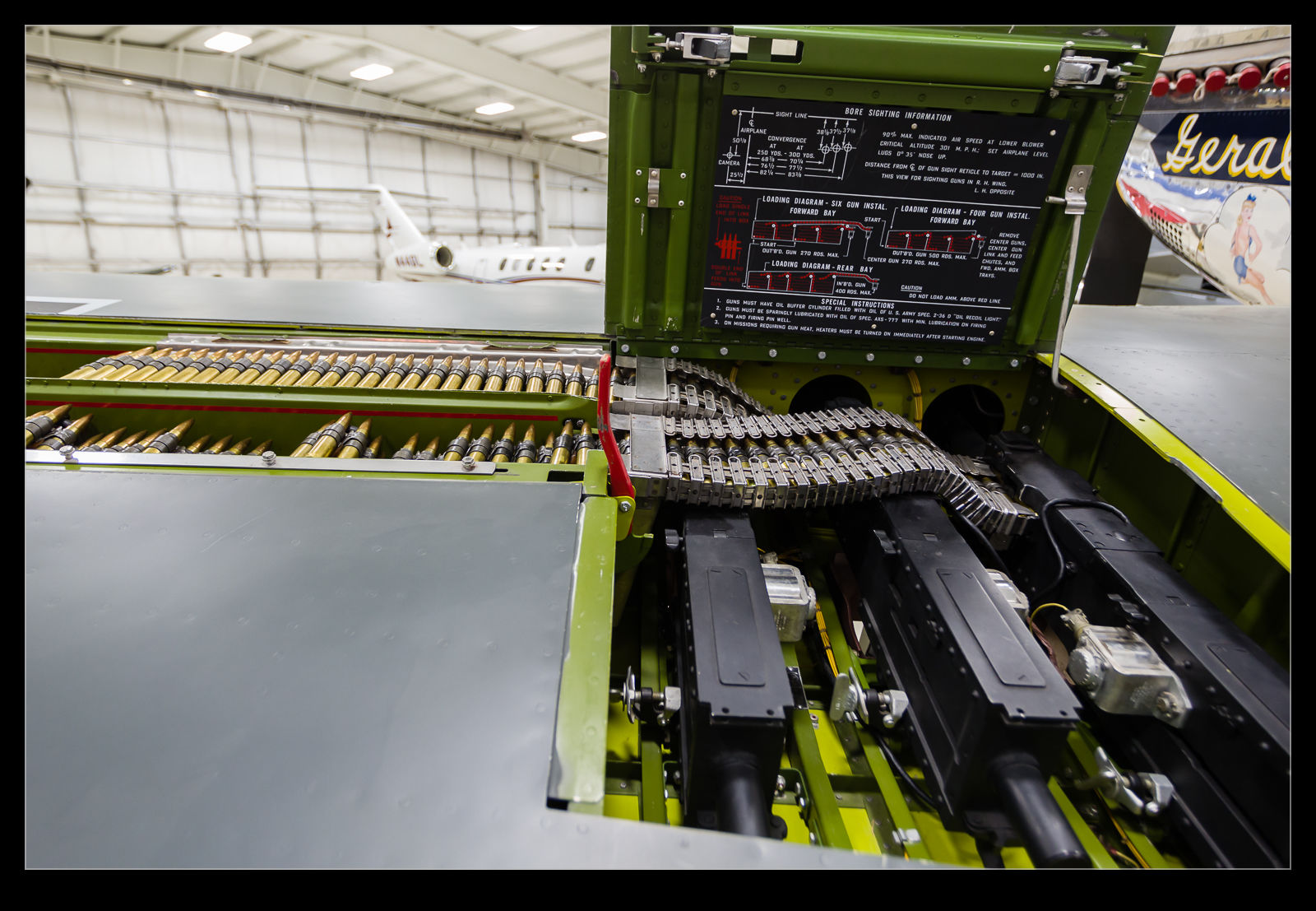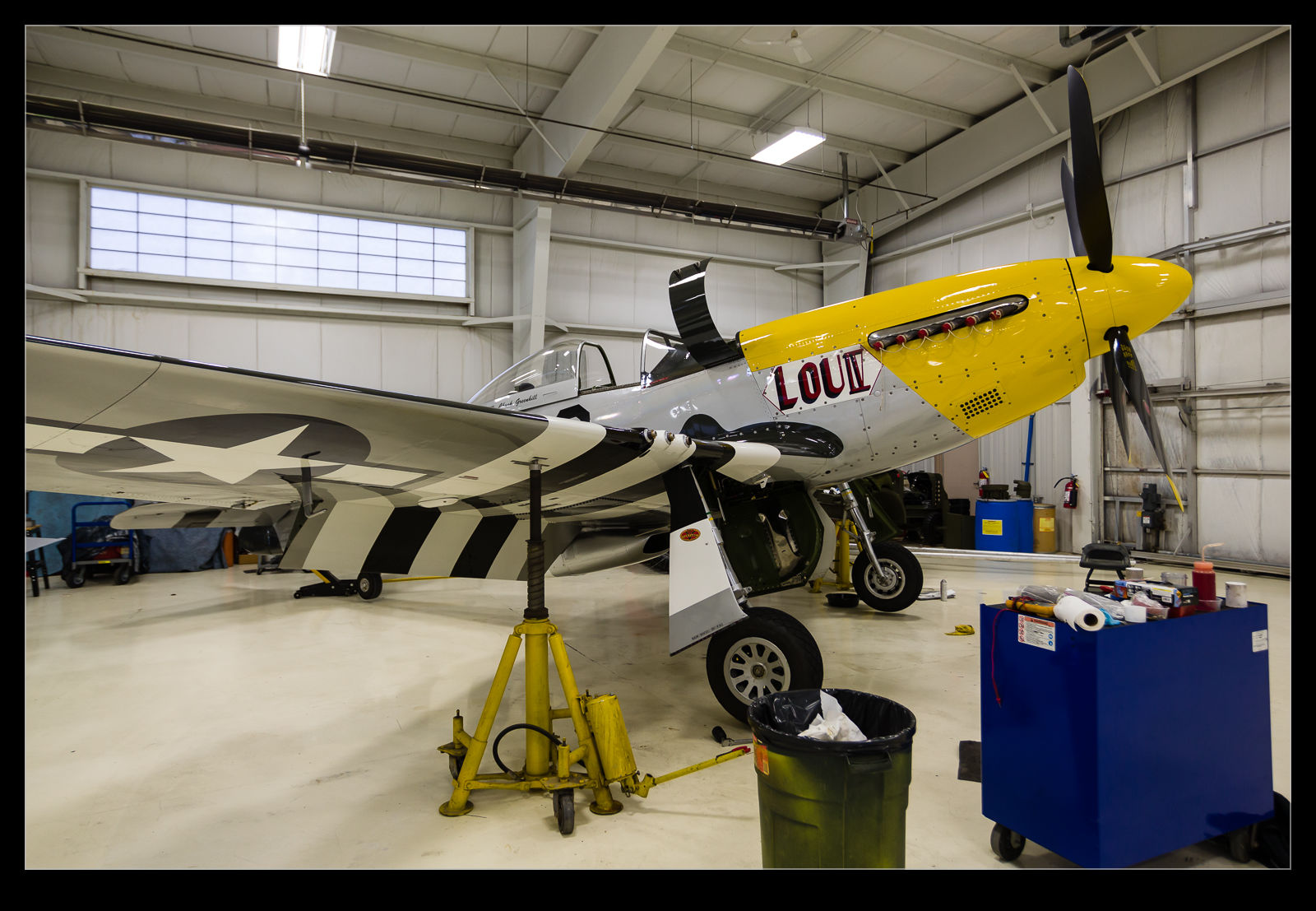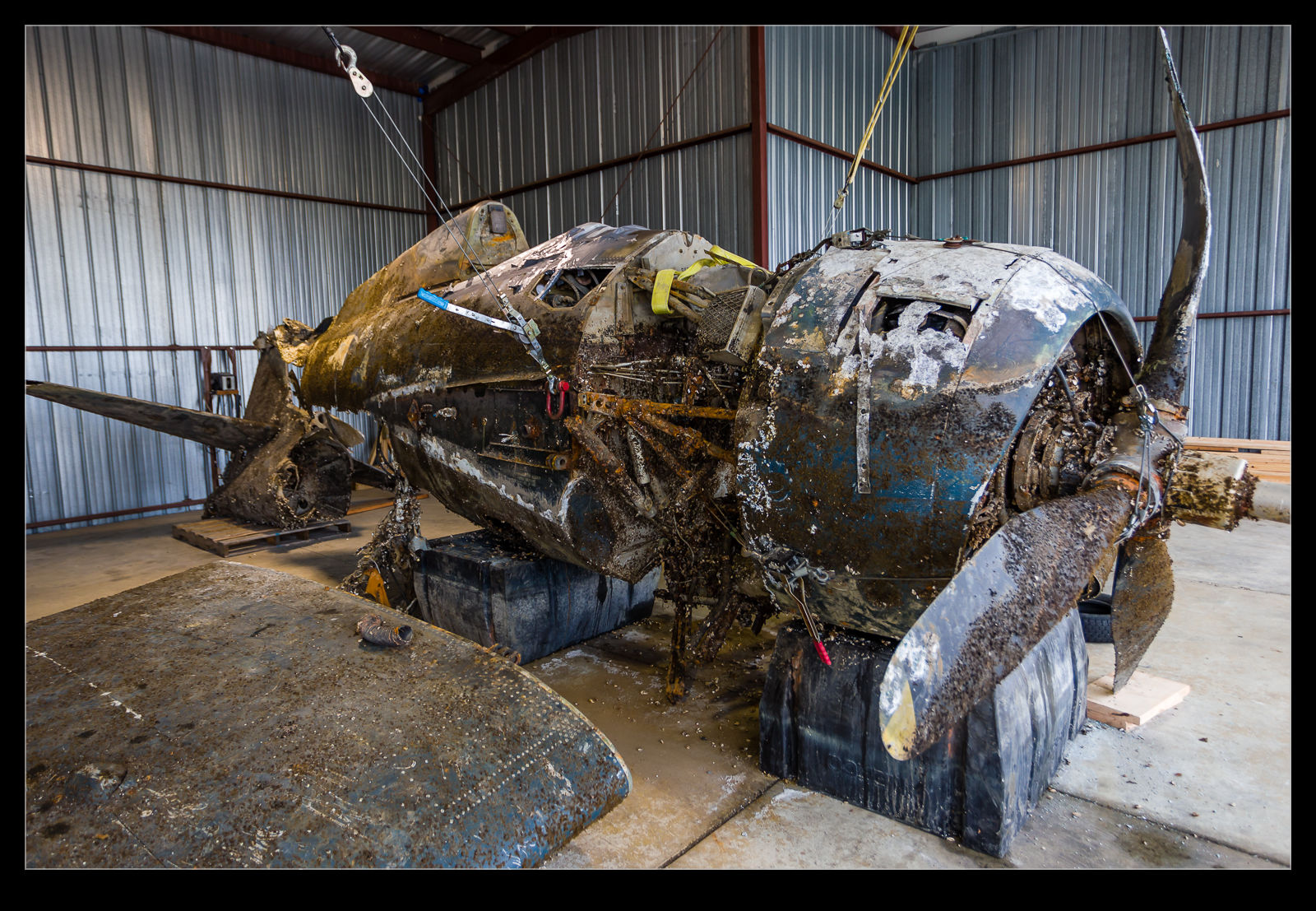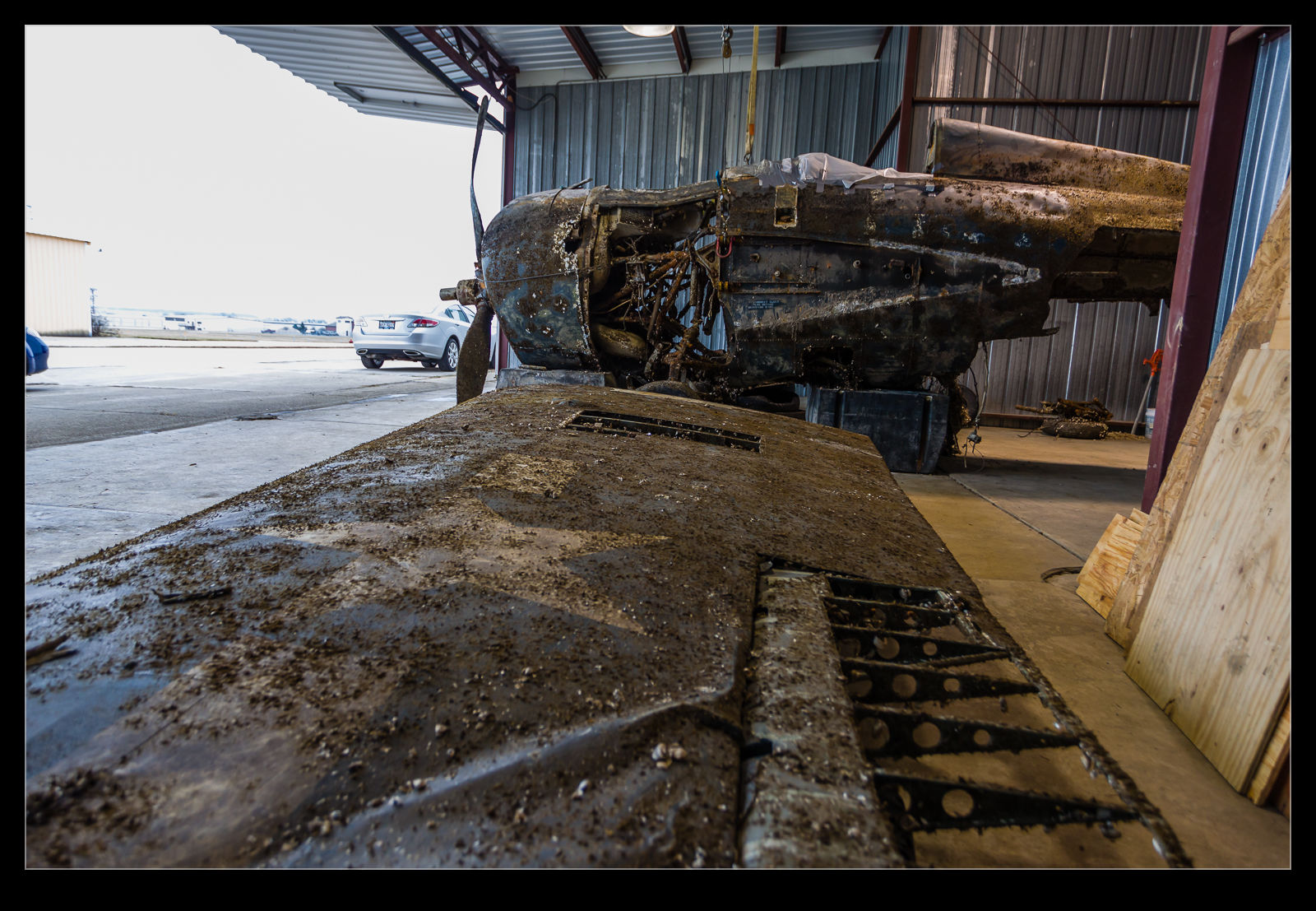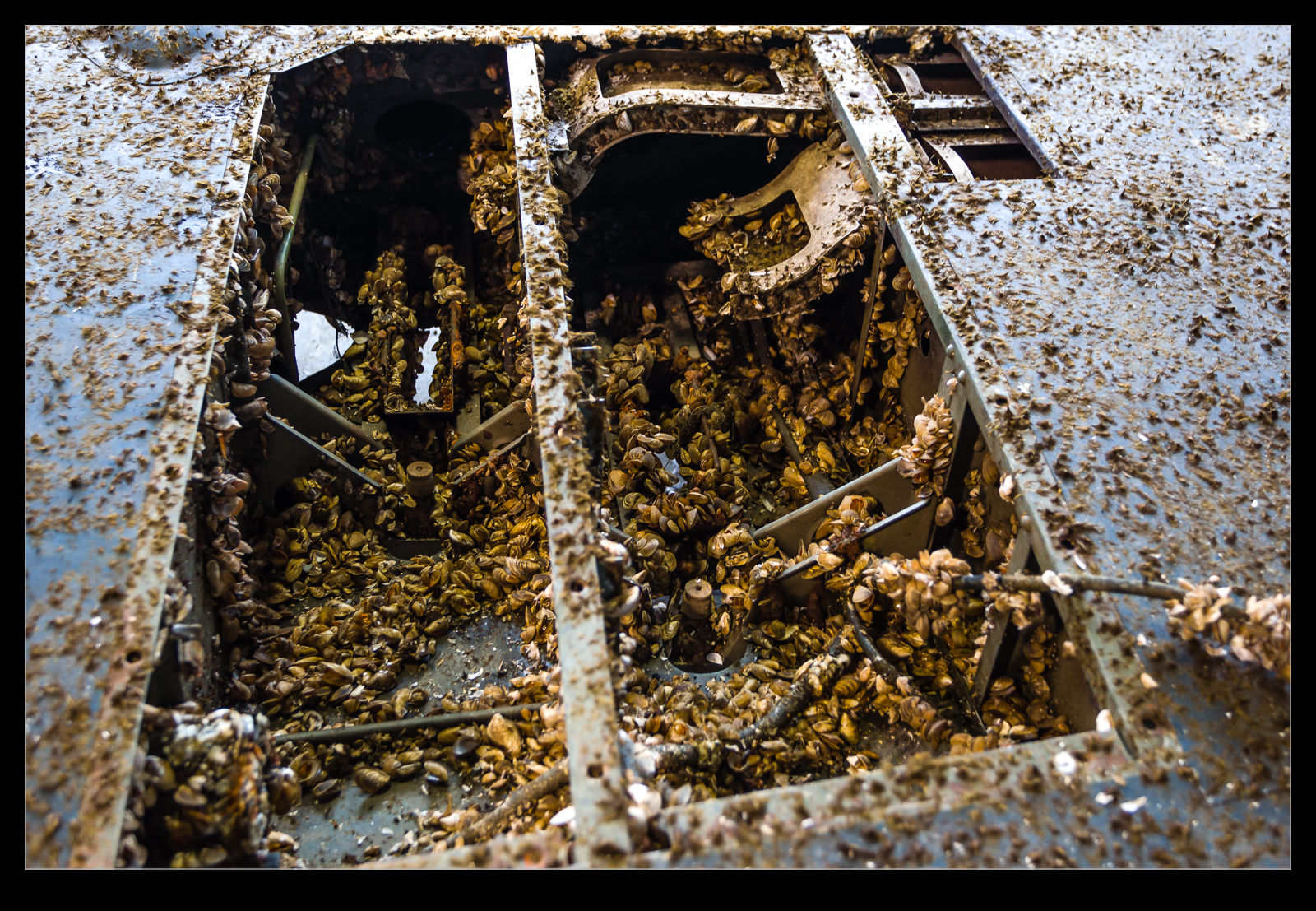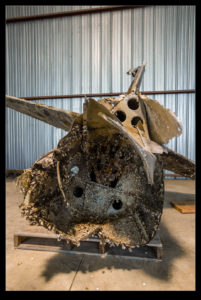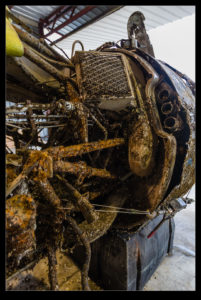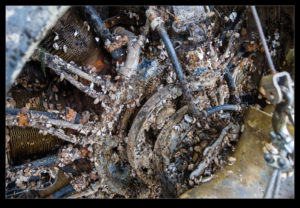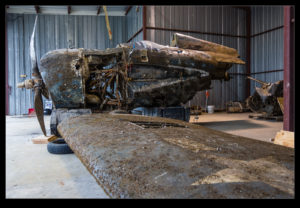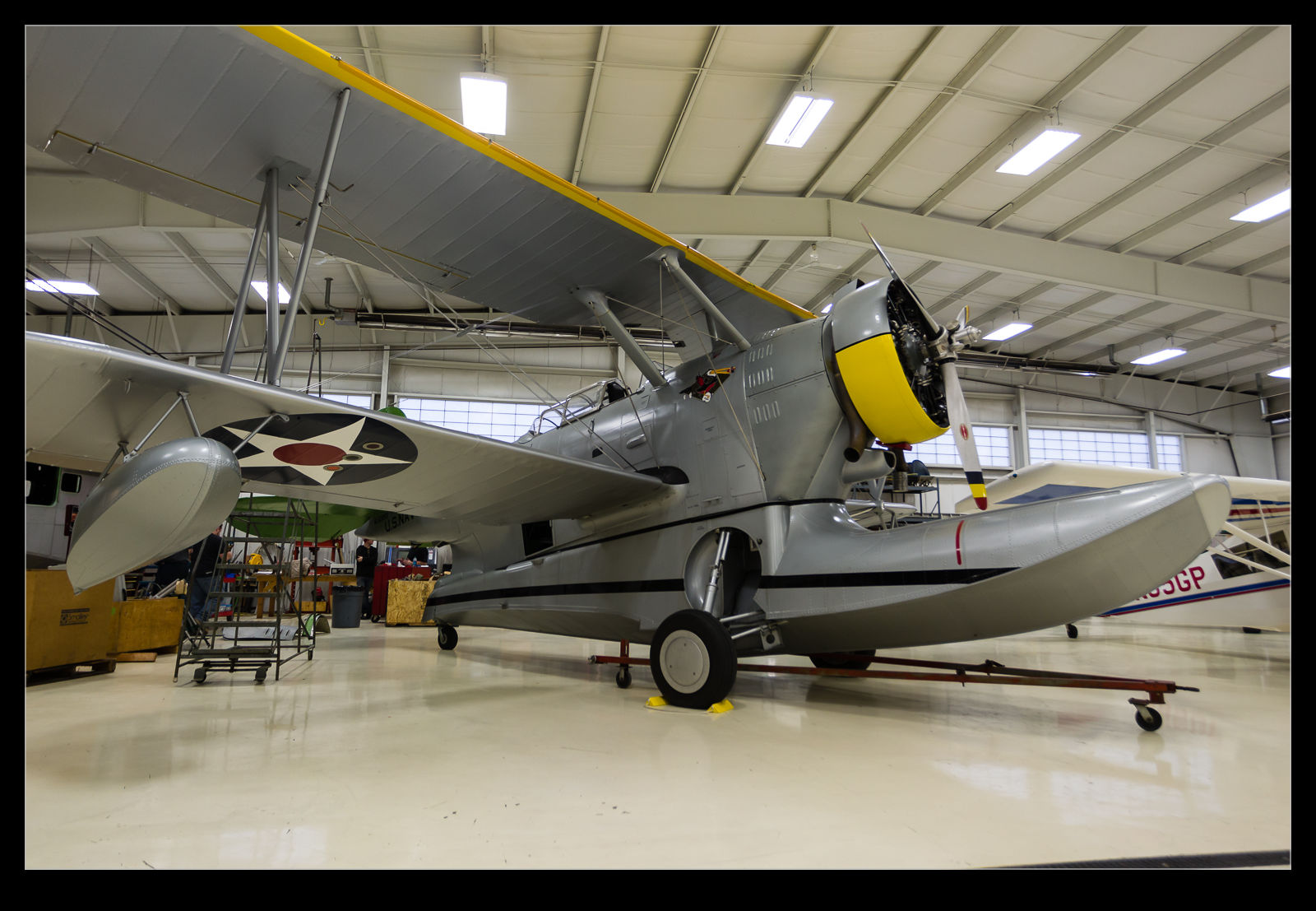 Back when we lived in Chicago, I went to Kenosha to photograph the Grumman Wildcat that had recently been lifted from Lake Michigan. While I was there, I also got to have a look around the hangar which housed the collection of Chuck Greenhill. His airworthy planes were stored in the hangar but it was also busy working on restorations of some Grumman amphibians.
Back when we lived in Chicago, I went to Kenosha to photograph the Grumman Wildcat that had recently been lifted from Lake Michigan. While I was there, I also got to have a look around the hangar which housed the collection of Chuck Greenhill. His airworthy planes were stored in the hangar but it was also busy working on restorations of some Grumman amphibians.
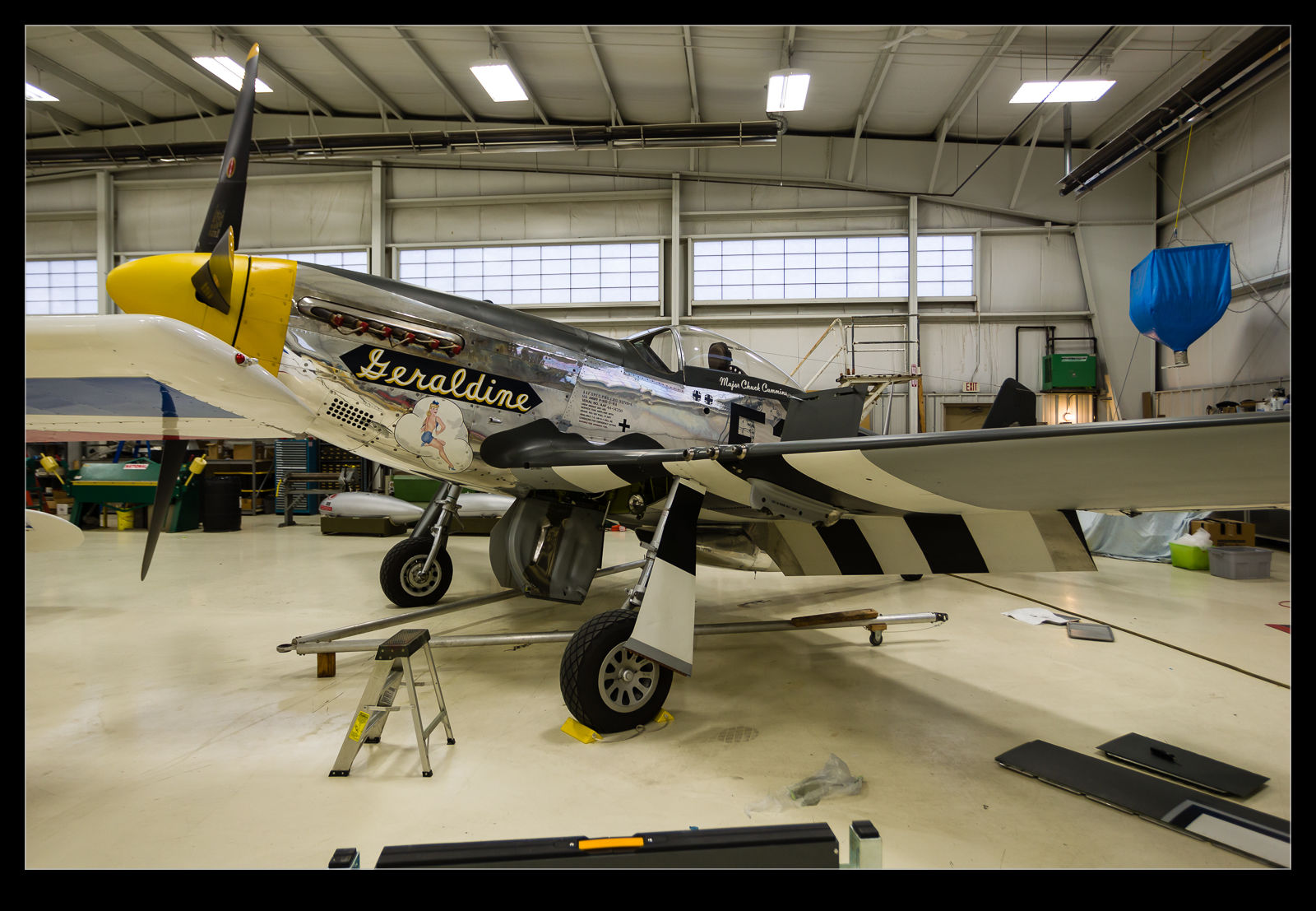 His Duck was in the hangar and it was a great looking example. I was disappointed that I never got to see it fly. It looked immaculate. I understand it has been sold and is now in Texas. There were also two Mustangs parked in there. One of them, Geraldine, they claimed to be the most authentic Mustang example in the world. I don’t know how you would measure such things but they seemed very confident claiming this. It even included a full, working armament so you could head up and shoot someone down if you were so inclined.
His Duck was in the hangar and it was a great looking example. I was disappointed that I never got to see it fly. It looked immaculate. I understand it has been sold and is now in Texas. There were also two Mustangs parked in there. One of them, Geraldine, they claimed to be the most authentic Mustang example in the world. I don’t know how you would measure such things but they seemed very confident claiming this. It even included a full, working armament so you could head up and shoot someone down if you were so inclined.
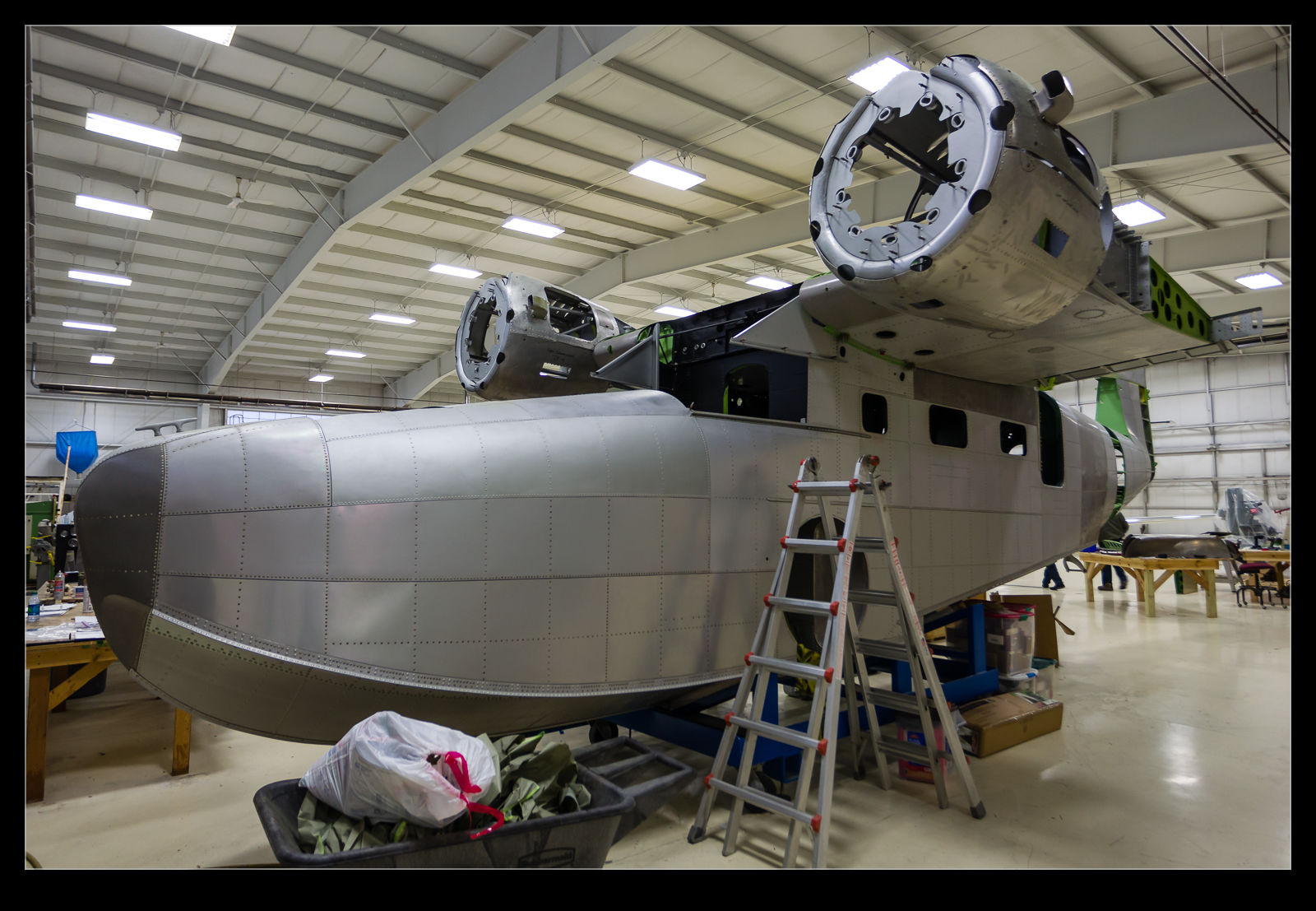 The amphibian restorations were very interesting. Bare metal fuselages and the wings off while they were in work. It would have been good to make regular visits to see how things progressed but I was not able to go back again so couldn’t do that. Even so, pretty cool to see the workmanship on these airframes.
The amphibian restorations were very interesting. Bare metal fuselages and the wings off while they were in work. It would have been good to make regular visits to see how things progressed but I was not able to go back again so couldn’t do that. Even so, pretty cool to see the workmanship on these airframes.
